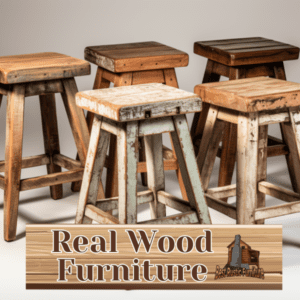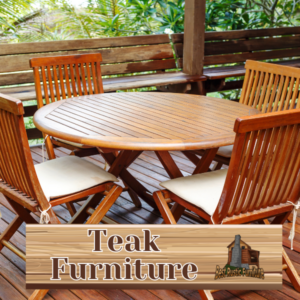
Warped wood furniture can be an eyesore and a source of frustration. However, with our step-by-step guide, you can fix it and bring back its original charm. By following our instructions, you can restore your heirlooms and keep them in beautiful condition for years to come.
Key Takeaways
- Fixing warped wood furniture can restore its original charm and beauty.
- Assessing the damage is crucial before attempting any repairs.
- Removing moisture and straightening the wood are the first steps in the repair process.
- Filling and sanding will help to achieve a smooth surface ready for refinishing.
- Applying primer, paint, and a protective wood finish will help to prevent future warping and damage.
Understanding Wood Warping
Wood warping is a common problem that affects many types of furniture. It’s when the wood changes its shape due to a variety of factors. Understanding the root causes of wood warping is crucial to fix it.
Causes of Wood Warping
The primary cause of wood warping is moisture. When wood absorbs moisture, it expands. Conversely, when it loses moisture, it contracts. The uneven distribution of moisture across the wood can cause it to warp. Other factors like temperature, humidity, and the type of wood species also contribute to the problem.
Moisture Levels and Wood Warping
The moisture content in wood is expressed as a percentage of the wood’s weight. This percentage varies depending on the species of wood, but it’s critical to keep it in check to avoid warping. Wood with a moisture content of 20% or higher is highly susceptible to warping.
Humidity and Wood Warping
Humidity also plays a crucial role in warping. High humidity levels cause wood to absorb moisture, while low humidity can cause it to dry out and shrink. Wood is less likely to warp when the humidity level is kept between 30% to 50%.
Wood Species and Warping
Solid wood furniture made from softwoods like pine is more prone to warping than hardwoods like oak and mahogany. This is due to the structure of softwoods having fewer cells and more air space, making them more vulnerable to moisture. Even within the same species, different types of wood can vary in their susceptibility to warping.
Preventing Wood Warping
To prevent wood warping, it’s essential to control the moisture and humidity levels. Proper storage, avoiding exposure to direct sunlight or extreme temperatures, and using a dehumidifier or humidifier when necessary can help avoid this problem. Choosing the right wood species can also help. Hardwoods like oak, mahogany, and walnut are less prone to warping.
Assessing the Damage
Before attempting any repairs, it’s crucial to assess the extent of the damage to your warped wood furniture. Inspecting the piece thoroughly will help you identify any defects and determine the best course of action.
The first step in inspecting your furniture is to take a close look at the affected areas. Check for any cracks, splits, or other visible signs of damage. Pay attention to any areas where the wood may be weaker, as these are likely spots where warping may have occurred.
If you’re unsure of what to look for, consider bringing in a professional to help you assess the damage. They can provide expert advice on the best ways to repair your furniture.
In addition to inspecting the visible damage, it’s important to feel the wood for any changes in texture or hardness. Warping can lead to uneven surfaces or weakened areas that may not be immediately visible. Run your hand along the furniture to get a sense of any irregularities.
Identifying Defects
Once you’ve inspected the furniture for general damage, it’s time to identify any specific defects that may be causing the warping. These defects can include knots, bark pockets, or other irregularities in the wood grain.
Identifying defects is particularly important because they can lead to uneven drying and changes in the wood’s moisture content. If left unaddressed, these defects can worsen over time and may even lead to further warping.
If you’re unsure of how to identify defects, consider consulting a woodworking guide or bringing in a professional to help you spot them. They can provide insight on the specific defects that may be affecting your furniture and the best ways to address them.
Removing Moisture from the Wood
When dealing with warped wood furniture, your first course of action is to remove any moisture. You can use a combination of towels, heat, and dryness to gradually reduce the moisture content in the affected areas.
Begin by placing a dry towel over the warped wood surface and then pressing a warm iron onto it. This will help to draw out any moisture through the towel. Repeat this process several times until the towel is wet and the wood surface is dry to the touch.
If the damage is severe, you may need to use a dehumidifier or air conditioner to remove moisture from the surrounding area. Keep the furniture away from damp or humid areas until it’s fully restored.
Using Desiccants to Remove Moisture
If the warped wood furniture has been exposed to a high level of moisture, it may take longer to dry. In this case, you can use a desiccant like silica gel to speed up the process. Silica gel is a highly absorbent material that can suck out moisture from the air and surrounding materials. You can purchase it online or at a hardware store.
Place the silica gel packets or crystals around the affected areas of the furniture and cover it with a plastic sheet, creating a sealed environment. After a few days, check the moisture content and repeat the process until the wood is dry and restored to its original shape.
Using Heat to Remove Moisture
Another effective way to remove moisture is by using heat. You can place the warped wood furniture in a warm, dry area or use heat lamps to dry out the affected areas. Keep the furniture in a well-ventilated area to prevent any potential fire hazards.
Once the moisture is removed, it’s time to move on to the next step – straightening the wood.
Straightening the Wood
Once the wood is dry, it’s time to straighten it back to its original shape. This step is crucial to ensure the repaired furniture is sturdy and safe to use. Here’s how to straighten warped wood:
- Prepare the clamps: get two bar clamps that are longer than the width of the warped area and two pieces of scrap wood that are longer than the clamps.
- Place the scrap wood on a flat surface, parallel to each other and slightly wider than the warped area.
- Put the warped side facing down on the scrap wood, aligning the warped area with the clamps’ position.
- Apply pressure: attach the bar clamps to the scrap wood, ensuring they grip the warped area tightly, but not too tight that it damages the wood. Make sure the clamps’ pressure is even, and adjust if necessary.
- Leave the clamps in place for at least 24 hours, or until the wood is fully straightened. It’s essential to wait until the wood is straightened before removing the clamps to avoid any further damage.
If the wood is still warped after the first attempt, repeat the process, applying a bit more pressure until it straightens. However, be careful not to overdo it, as too much pressure may damage the wood.
By using clamps, pressure, and a flat surface, you can straighten warped wood efficiently. With patience and care, your furniture will be sturdy and beautiful again.
Filling and Sanding: How to Repair Damaged Areas
After straightening the warped wood, you may notice gaps or uneven surfaces in the damaged areas. Filling and sanding are crucial steps in achieving a smooth surface ready for refinishing.
First, you will need to choose the right wood filler. There are many different types of filler, including water-based and solvent-based options. For large gaps, use a filler with a higher density.
Once you have chosen your wood filler, follow these steps:
- Apply the filler to the damaged area with a putty knife.
- Ensure the filler is level with the surrounding wood.
- Wait for the filler to dry completely.
- Sand the filled area with sandpaper until it is smooth.
Depending on the severity of the damage, you may need to repeat the filling and sanding process multiple times until the damaged area is level with the surrounding wood.
It’s important to note that sanding needs to be done carefully, as you don’t want to remove too much wood or sand unevenly, which may cause further damage.
Once you’ve filled and sanded your wood furniture, you will need to clean the surface to remove any dust or debris before moving on to the next step. A clean surface is essential for a smooth and professional-looking finish.
Applying Primer and Paint
After straightening and filling the damaged areas in your warped wood furniture, the next step is to apply primer and paint for protection and a seamless finish. Primer is crucial to creating a smooth surface for the paint to adhere to, while also preventing stains or discoloration from bleeding through.
When selecting primer and paint products, it’s important to choose ones that match the wood species and color of your furniture. You can consult with a paint specialist or match the colors yourself using swatches.
Tip: Make sure to work in a well-ventilated area and wear protective gear like gloves and a mask to avoid inhaling paint fumes.
Start by applying a thin layer of primer with a brush, ensuring even coverage over all surfaces. Let it dry completely before applying the first coat of paint. Depending on the severity of the damage, multiple coats may be needed to achieve the desired look.
Using a brush or roller, apply the paint in long, even strokes, moving with the grain of the wood. Allow each coat to dry completely before applying additional coats. Be sure to inspect the furniture for any missed spots or rough areas after each coat.
After the final coat, let the furniture dry completely according to the manufacturer’s instructions before handling or moving it. Your furniture should now look fresh and polished, with a new layer of protection to prevent future damage.
Applying Varnish or Polyurethane
After painting, it’s important to apply a protective wood finish to the repaired areas. Varnish or polyurethane are the best options for achieving a durable and beautiful finish.
Choosing the right product
When selecting varnish or polyurethane, consider the level of protection needed and the desired finish. Varnish provides a natural, glossy sheen while polyurethane has a more durable, matte finish.
Number of coats
It’s recommended to apply multiple coats of varnish or polyurethane for optimal protection. Three to four coats are typically sufficient, with ample drying time between each application.
Application method
Using a brush is the best method for applying varnish or polyurethane. Apply in thin, even coats, and use long strokes in the direction of the wood grain. Allow each coat to dry completely before applying the next. Sanding lightly between coats will also help achieve a smooth finish.
Protective benefits
Applying varnish or polyurethane not only provides protection for your repaired wood furniture, but it also enhances its overall appearance. A proper finish helps to prevent moisture damage, scratches, and other types of wear and tear, ensuring your furniture stays in top condition for years to come.
Other Finishing Options
When it comes to finishing options for your repaired wood furniture, varnish and polyurethane are not your only choices. There are other options you can consider, each with its own benefits and drawbacks.
Lacquer
Lacquer is a popular choice for finishing wood furniture due to its high sheen and durability. It dries quickly and can be applied with a spray gun for a smooth and even finish. However, it is not as protective as varnish or polyurethane, and it requires a well-ventilated area for application.
Shellac
Shellac is another finishing option that is easy to apply and dries quickly. It provides a glossy finish that enhances the natural beauty of the wood. However, it is not as durable as varnish or polyurethane, and it may require frequent reapplication for long-term protection.
Spray Gun
A spray gun can be used to apply a variety of finishes to wood furniture, including lacquer, shellac, and even paint. It allows for even coverage and a smooth finish, but it requires some practice to use effectively. It is also important to use proper safety precautions, such as wearing a mask and protective gear, when using a spray gun.
When choosing a finishing option, consider the level of durability you need, as well as the overall look and feel you want to achieve. Each option has its own unique benefits, so weigh them carefully before making a decision.
Preventing Warping in the Future
After putting in the effort to fix your warped wood furniture, it’s important to take measures to prevent it from happening again in the future. By following these tips, you can ensure your furniture stays in great condition for years to come.
Moisture Control
One of the main causes of wood warping is excess moisture. To prevent this, make sure to keep your furniture away from humid areas such as bathrooms or damp basements.
You can also use a dehumidifier to control the humidity levels in your home and prevent moisture buildup in the wood.
Wood Species
Not all wood species are created equal when it comes to warping. Some, like oak or hickory, are more resistant to moisture and less prone to warping.
When selecting wood furniture, make sure to choose a species that is known for its durability and resistance to warping. This can save you time and money in the long run.
Protection
To prevent scratches, stains, and other damage to your wood furniture, it’s important to use protective measures such as coasters and tablecloths.
You can also apply a protective finish such as varnish or polyurethane to further shield your furniture from wear and tear.
Repairing Water Damage on Wood Furniture
If your wood furniture has been damaged by water, quick action is necessary to prevent further harm. Early detection is crucial to avoiding permanent damage and stains. Here are some steps to repair water damage on wood furniture.
- Dry the furniture: Remove any excess water from the furniture using towels. You can also use a fan or dehumidifier to speed up the drying process.
- Assess the damage: Inspect the furniture for any signs of swelling, cracking, or discoloration. This will help you determine the extent of the damage and the best course of action to take.
- Sand the damaged areas: Sand any raised areas gently until they are level with the surrounding surface. Make sure to wear a dust mask while sanding.
- Remove stains: If there are water stains on the furniture, you can remove them by applying a mixture of equal parts white vinegar and olive oil. Let the mixture sit for an hour before wiping it off with a clean cloth.
- Apply wood filler: Fill any cracks, gaps, or holes with wood filler. Sand the surface smooth once the filler has dried.
- Stain or paint the furniture: Apply a matching stain or paint to the furniture to restore its original color. Make sure the finish is completely dry before moving on to the next step.
- Protect the furniture: Apply a protective finish, such as wax or polyurethane, to protect the newly refinished surface from future water damage.
By following these steps, you can repair water damage on your wood furniture and restore it to its former beauty. Remember to act quickly and take preventive measures to avoid future damage.
Conclusion
Fixing warped wood furniture is a labor of love that pays off with beautiful restorations of cherished heirlooms. With patience and care, you can bring back the charm of your vintage furniture and make it look great again.
It’s important to assess the damage, remove moisture, straighten the wood, fill and sand damaged areas, and protect the finish with primer, paint, and varnish or polyurethane. There are also other finishing options to consider, such as lacquer and shellac, that provide different levels of sheen and durability.
Furthermore, preventing warping in the future requires taking measures to control moisture levels and selecting the right wood species. By doing so, you can preserve your furniture for generations to come.
If your warped wood furniture is a result of water damage, early detection is key. Removing stains and restoring the wood should be done with care and precision to avoid further damage.
In conclusion, by following the steps outlined in this guide, you can fix warped wood furniture, embark on satisfying restorations, and keep your heirlooms looking beautiful for years to come.
FAQ
How long does it take to fix warped wood furniture?
The time it takes to fix warped wood furniture depends on the extent of the damage and the drying process. It can take anywhere from a few days to a few weeks to complete the repair.
Can any type of wood be fixed when it warps?
Most types of wood can be fixed when they warp, but the success of the repair may vary. Some wood species are more prone to warping and may require additional steps or expertise to fix.
Can I fix warped wood furniture myself, or should I hire a professional?
You can fix warped wood furniture yourself with proper guidance and tools. However, if you are unsure or have valuable or delicate pieces, it may be best to consult a professional to ensure the best results.
What tools and materials do I need to fix warped wood furniture?
The tools and materials needed to fix warped wood furniture may include towels, clamps, wood filler, sandpaper, primer, paint, varnish or polyurethane, brushes, and a flat surface.
How can I prevent wood furniture from warping in the future?
To prevent wood furniture from warping in the future, it’s important to control moisture levels, avoid placing furniture in areas with extreme temperature or humidity changes, and choose stable wood species.
Can I use a different finishing option other than varnish or polyurethane?
Yes, there are other finishing options available such as lacquer and shellac. These options can provide different sheen levels and durability. Additionally, using a spray gun can offer a professional-looking finish.
How do I identify water damage on my wood furniture?
Water damage on wood furniture can be identified by stains, discoloration, mold growth, or a musty smell. Early detection is important to prevent further damage and warping.
Should I attempt to fix water-damaged wood furniture myself?
Fixing water-damaged wood furniture can be challenging and may require professional assistance, especially if the damage is severe. It’s best to assess the extent of the damage and consult with experts if needed.






